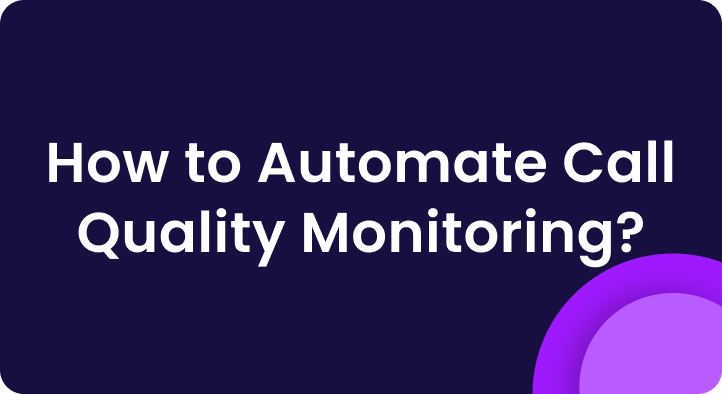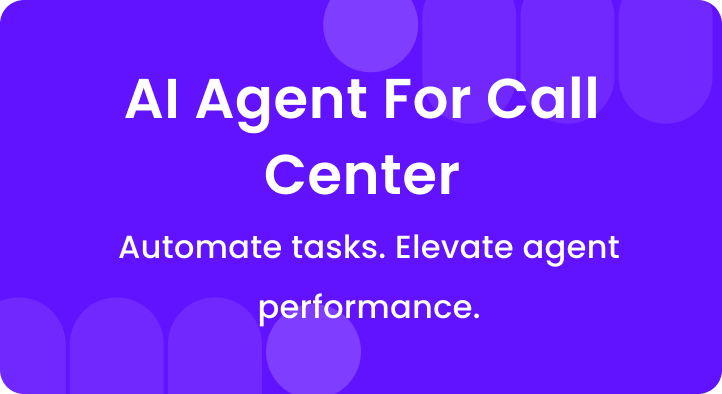Whether you’re leading a contact center or managing a sales floor, performance metrics are your daily dashboard.
But not all metrics are equally useful. Some show real impact, while others just look good on reports.
This guide explains which metrics matter most, why they matter, and how to use them to coach and grow your teams.
Why do metrics matter?
Metrics provide visibility into team performance, help identify coaching needs, and show where your processes succeed or fail.
Without clear KPIs, you’re managing blind, guessing instead of leading.
Tracking the right metrics helps you:
- Spot top and low performers early
- Improve customer experience
- Increase conversions and revenue
- Align your QA, coaching, and sales efforts
The goal isn’t to track everything – it’s to track what drives outcomes.
Core Metrics for Contact Center Agents
Here are the key metrics that reflect agent performance in support or service roles:
1. First Call Resolution (FCR)
- Why it matters: Measures if the agent solved the issue in one call.
- Tip: A high FCR usually means fewer follow-ups and happier customers.
2. Average Handle Time (AHT)
- Why it matters: Tracks how long an agent spends per interaction.
- Tip: Balance speed with quality. An AHT that’s too low can mean rushed service.
3. Customer Satisfaction Score (CSAT)
- Why it matters: Direct feedback from customers post-call.
- Tip: Use CSAT alongside QA scores to get a complete view of performance.
4. Adherence to Schedule
- Why it matters: Measures how well agents follow shift and break schedules.
- Tip: Important for workforce management and SLA compliance.
5. Quality Assurance (QA) Score
- Why it matters: Tracks how well agents follow processes and soft skills.
- Tip: Use AI-based QA to ensure consistent scoring across 100% of calls.
6. Call Transfer Rate
- Why it matters: High transfer rates may indicate poor training or process gaps.
- Tip: Set a benchmark by team or use case. Not every transfer is bad.
Core Metrics for Sales Teams
Sales roles need a slightly different performance lens. These metrics reflect efficiency, consistency, and revenue impact.
1. Conversion Rate
- Why it matters: Measures how many leads turn into closed deals.
- Tip: Segment by campaign or channel to identify what’s working.
2. Call-to-Close Ratio
- Why it matters: Tracks how many calls it takes to close a deal.
- Tip: A lower ratio indicates sharper selling and better qualification.
3. Talk Time per Day
- Why it matters: Shows how much actual selling is happening.
- Tip: Low talk time may indicate time lost in admin tasks.
4. Follow-up Rate
- Why it matters: Sales rarely close in one call. This tracks consistency.
- Tip: Look for agents who follow up on time and stay persistent.
5. Pipeline Value or Forecast Accuracy
- Why it matters: Measures how well reps estimate their deals.
- Tip: Helps in planning, resourcing, and revenue predictability.
6. Upsell/Cross-sell Rate
- Why it matters: Shows how often reps expand customer value.
- Tip: Often tied to training, product knowledge, and confidence.
Shared Metrics That Matter for Both
Some KPIs apply across both support and sales:
- Attendance & Punctuality – Reliability still matters.
- Call Disposition Accuracy – Helps clean reporting and follow-ups.
- Call Recording/Transcript Review – Use AI tools to analyze calls at scale.
- Sentiment Score – AI-powered tools can measure tone, frustration, or positivity.
- Compliance Metrics – Especially in regulated industries (e.g., finance or healthcare).
What should you not overfocus on?
Some metrics look flashy but don’t tell you much alone:
- Total calls made/received – Volume without context can be misleading.
- Script adherence (as a standalone) – Only useful when paired with outcomes.
- Average call length – Long calls aren’t always bad if they solve complex issues.
Track these, but don’t coach solely based on them.
How to use these metrics for coaching
Tracking metrics is just the start. The real value comes when you use them to:
- Identify top performers and their patterns
- Spot struggling reps early
- Set clear, realistic performance goals
- Provide personalized feedback backed by data
- Build coaching programs that focus on the “why,” not just the “what.”
Example:
If an agent has a low QA score and high AHT, listen to a few calls. Are they overexplaining? Are they unsure? That’s your coaching opportunity.
Conclusion
You can’t improve what you don’t measure, but measuring the wrong things leads nowhere.
Start with a handful of meaningful metrics that match your goals. Whether you’re running a QA team or a sales floor, these KPIs will help you track progress, improve performance, and drive results.
Don’t just collect data. Act on it. Coach with it. Win because of it.



